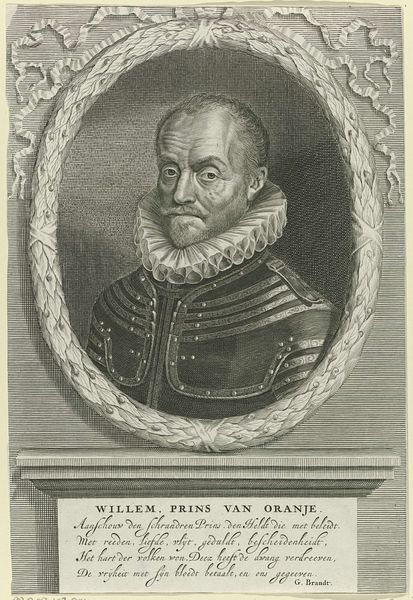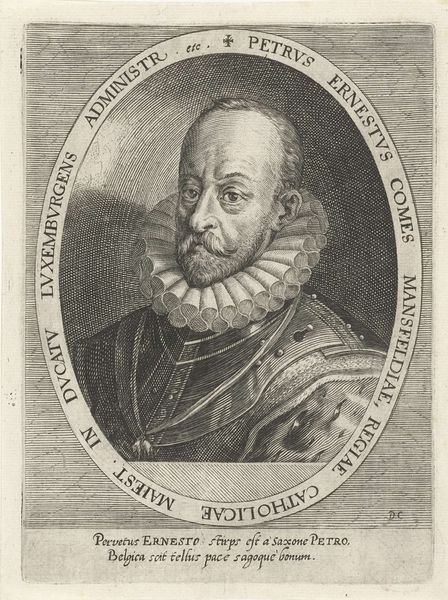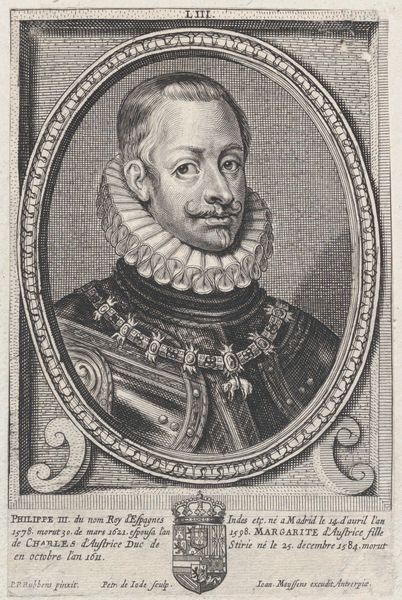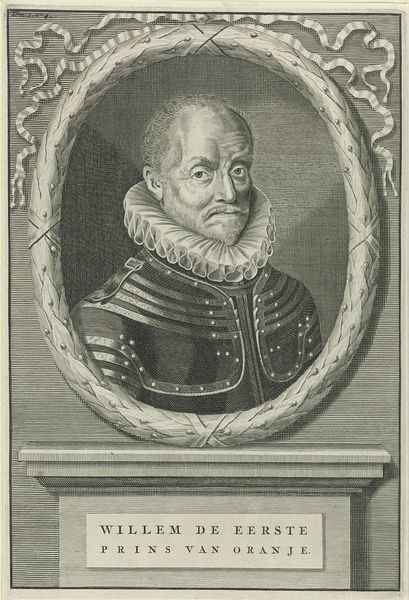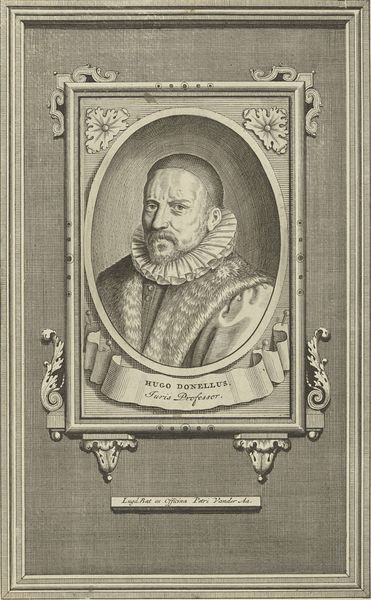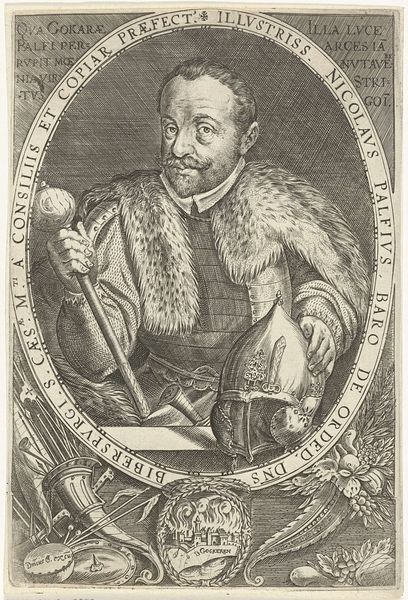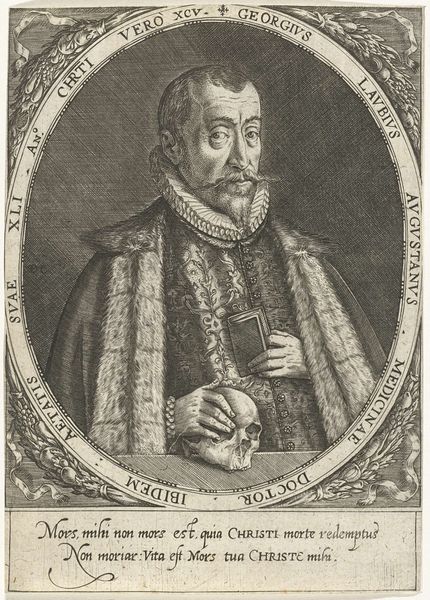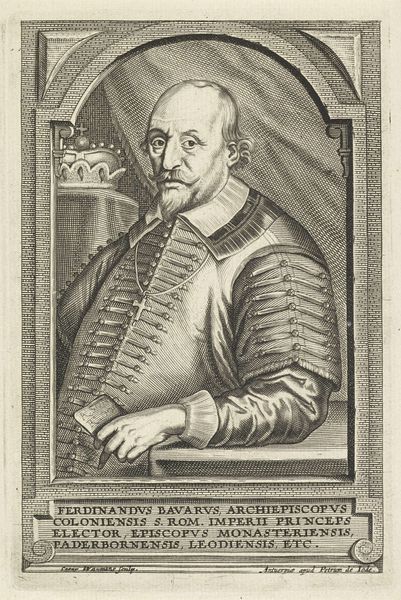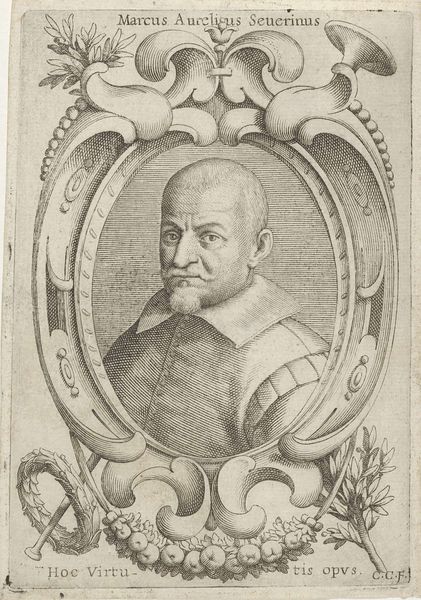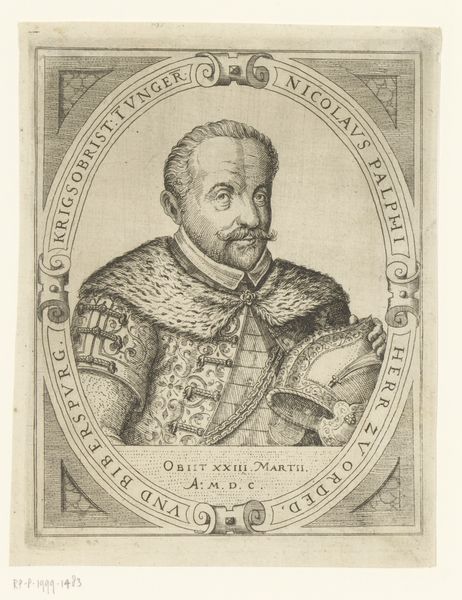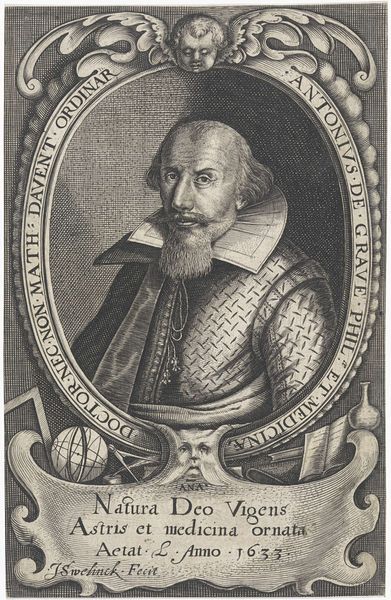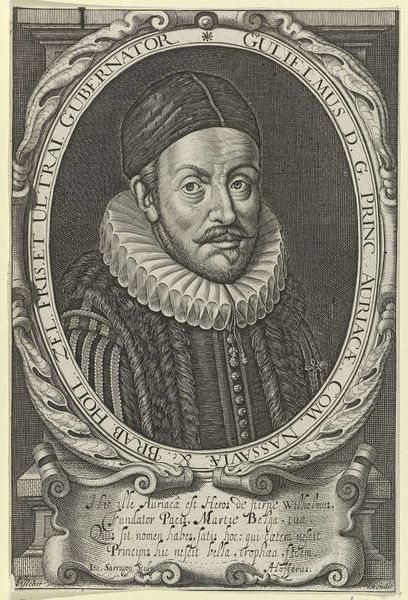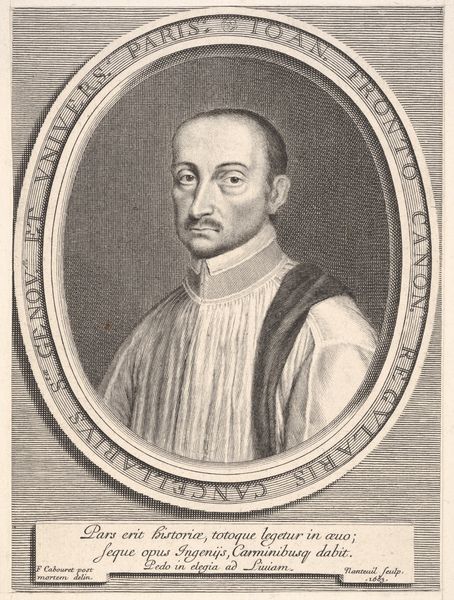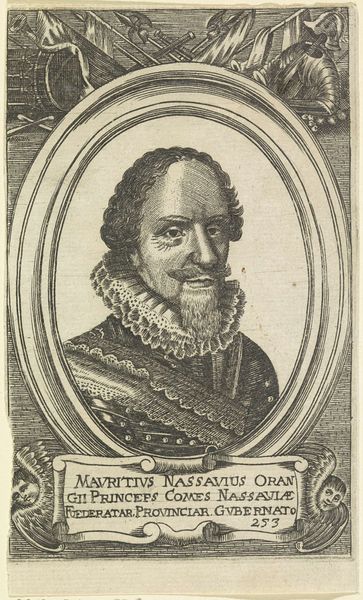
metal, engraving
#
portrait
#
facial expression drawing
#
baroque
#
metal
#
old engraving style
#
caricature
#
portrait reference
#
portrait drawing
#
history-painting
#
engraving
Dimensions: height 176 mm, width 128 mm
Copyright: Rijks Museum: Open Domain
Curator: The artwork before us, residing here at the Rijksmuseum, is an engraving identified as "Portret van Fabian von Dohna." Although its creator remains anonymous, we can place its origins sometime between 1590 and 1688. What are your initial thoughts on this portrait? Editor: It's immediately striking how intensely he's looking out. Almost confrontational, but there's a touch of sadness, too. It’s not just a face, it's a carefully constructed performance of power, even though the monochromatic nature limits dramatic light or shadow. Curator: Indeed, his gaze captures the essence of authority. Beyond that, I’m drawn to the oval frame. In heraldry, the oval signifies a sense of mystery and hidden knowledge. Notice, too, how the Latin inscription encircles him; this linguistic boundary further underscores the deliberate construction of his identity. Editor: Interesting. And considering the prominence of armor – clearly meant to broadcast martial prowess and nobility. I can’t help but wonder how the Von Dohna family utilized portraits like these. Were they instruments of political positioning, reinforcing their status? What message was it designed to send? Curator: The Von Dohna family was quite influential, holding significant territories and playing roles in major political events of their time. These engravings were indeed powerful instruments of political and social propaganda. Think about the circulation of these prints: They were accessible visual testaments of status. The lace collar, too, although seemingly delicate, represents both wealth and status within the aristocratic circles of the time. Editor: It's the careful detail, despite the limits of engraving, that elevates it above a simple representation of rank. The details on his armor catch light and even simulate the rich, textured materials from that period. This is not just about likeness; it is about lasting image-making in a world experiencing change. I see the beginning of modern celebrity portraits in something like this. Curator: Precisely. By focusing on attire and inscribed accolades, it becomes a permanent endorsement of a noble identity, and in turn helps build the myths and lasting identity needed for elite lineage. This ensures the sitter's place in history, regardless of changing political climates or the artist's name. Editor: So beyond an image of one man, it speaks of enduring family power. Curator: Absolutely, and reminds us how the powerful shape, and are shaped by, their public image. Thank you for those thoughts. Editor: A pleasure, indeed!
Comments
No comments
Be the first to comment and join the conversation on the ultimate creative platform.
